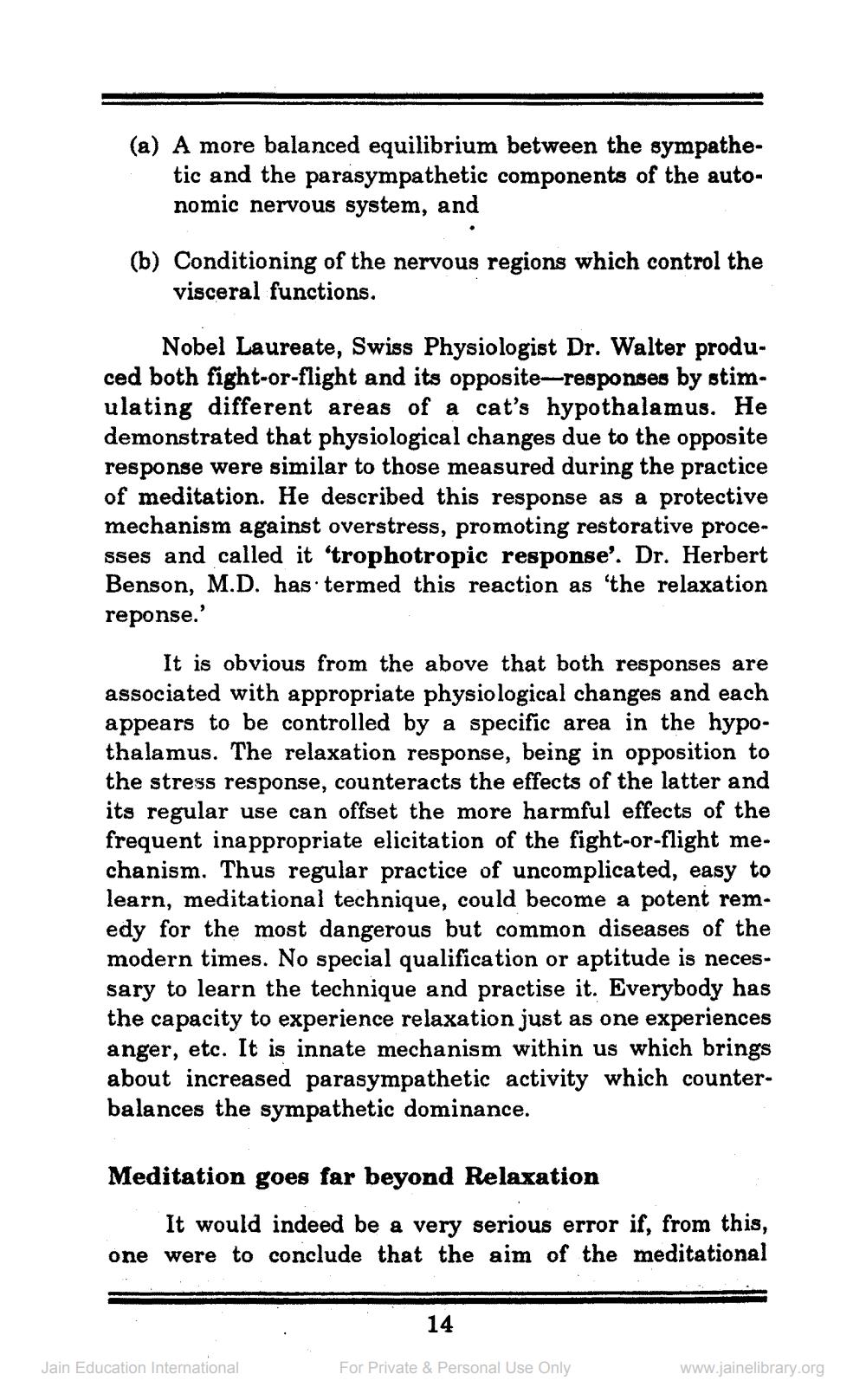________________
(a) A more balanced equilibrium between the sympathetic and the parasympathetic components of the autonomic nervous system, and
(b) Conditioning of the nervous regions which control the visceral functions.
Nobel Laureate, Swiss Physiologist Dr. Walter produced both fight-or-flight and its opposite-responses by stimulating different areas of a cat's hypothalamus. He demonstrated that physiological changes due to the opposite response were similar to those measured during the practice of meditation. He described this response as a protective mechanism against overstress, promoting restorative processes and called it 'trophotropic response'. Dr. Herbert Benson, M.D. has termed this reaction as 'the relaxation reponse.'
It is obvious from the above that both responses are associated with appropriate physiological changes and each appears to be controlled by a specific area in the hypothalamus. The relaxation response, being in opposition to the stress response, counteracts the effects of the latter and its regular use can offset the more harmful effects of the frequent inappropriate elicitation of the fight-or-flight mechanism. Thus regular practice of uncomplicated, easy to learn, meditational technique, could become a potent remedy for the most dangerous but common diseases of the modern times. No special qualification or aptitude is necessary to learn the technique and practise it. Everybody has the capacity to experience relaxation just as one experiences anger, etc. It is innate mechanism within us which brings about increased parasympathetic activity which counterbalances the sympathetic dominance.
Meditation goes far beyond Relaxation
It would indeed be a very serious error if, from this, were to conclude that the aim of the meditational
one
Jain Education International
14
For Private & Personal Use Only
www.jainelibrary.org




